A Low-Energy Consumption Planning Method for Multi-Locomotion Wheel-Legged Mobile Robots
Abstract
1. Introduction
2. Structure Design
3. Modeling
3.1. Kinematics Model
3.2. Dynamics Model
4. Low-Energy Motion Planning
4.1. Synchronized Mode
4.2. Tumbling Mode
4.3. Curl–Stretch Mode
5. Experiment
5.1. Flat Ground
5.2. Soft Ground
5.3. Downhill
6. Conclusions
Supplementary Materials
Author Contributions
Funding
Data Availability Statement
Acknowledgments
Conflicts of Interest
References
- Wang, K.; Sun, Z.; Nishimori, T.; Li, Z. Research on Current Situation and Trend of Robot Education in Japan. Mod. Educ. Technol. 2017, 27, 5–11. [Google Scholar]
- Smith, J.A.; Jivraj, J.; Wong, R.; Yang, V. 30 years of neurosurgical robots: Review and trends for manipulators and associated navigational systems. Ann. Biomed. Eng. 2016, 44, 836–846. [Google Scholar] [CrossRef]
- Zhu, Y.; Fei, Y.; Xu, H. Stability analysis of a wheel-track-leg hybrid mobile robot. J. Intell. Robot. Syst. 2018, 91, 515–528. [Google Scholar] [CrossRef]
- Liu, J.; Zhan, J.; Guo, C.; Li, Y.; Wu, H.; Huang, H. Data logic structure and key technologies on intelligent high-precision map. J. Geod. Geoinf. Sci. 2020, 3, 1–17. [Google Scholar]
- Xie, Y.; Zhang, X.; Meng, W.; Zheng, S.; Jiang, L.; Meng, J.; Wang, S. Coupled fractional-order sliding mode control and obstacle avoidance of a four-wheeled steerable mobile robot. ISA Trans. 2021, 108, 282–294. [Google Scholar] [CrossRef] [PubMed]
- Drotman, D.; Jadhav, S.; Sharp, D.; Chan, C.; Tolley, M.T. Electronics-free pneumatic circuits for controlling soft-legged robots. Sci. Robot. 2021, 6, eaay2627. [Google Scholar] [CrossRef] [PubMed]
- Dang, T.; Tranzatto, M.; Khattak, S.; Mascarich, F.; Alexis, K.; Hutter, M. Graph-based subterranean exploration path planning using aerial and legged robots. J. Field Robot. 2020, 37, 1363–1388. [Google Scholar] [CrossRef]
- Picardi, G.; Chellapurath, M.; Iacoponi, S.; Stefanni, S.; Laschi, C.; Calisti, M. Bioinspired underwater legged robot for seabed exploration with low environmental disturbance. Sci. Robot. 2020, 5, eaaz1012. [Google Scholar] [CrossRef] [PubMed]
- Huang, Z.; Bauer, R.; Pan, Y.-J. Event-triggered formation tracking control with application to multiple mobile robots. IEEE Trans. Ind. Electron. 2022, 70, 846–854. [Google Scholar] [CrossRef]
- Xu, S.; Peng, H. Design, analysis, and experiments of preview path tracking control for autonomous vehicles. IEEE Trans. Intell. Transp. Syst. 2019, 21, 48–58. [Google Scholar] [CrossRef]
- Velimirovic, A.; Velimirovic, M.; Hugel, V.; Iles, A.; Blazevic, P. A new architecture of robot with “wheels-with-legs” (WWL). In Proceedings of the AMC’98-Coimbra. 1998 5th International Workshop on Advanced Motion Control. Proceedings (Cat. No. 98TH8354), Coimbra, Portugal, 29 June–1 July 1998; pp. 434–439. [Google Scholar]
- Zhang, H.; Zhang, X.; Huang, Y.; Du, J.; Zhu, B. A novel reconfigurable wheel-legged mobile mechanism. In Proceedings of the International Design Engineering Technical Conferences and Computers and Information in Engineering Conference, Los Angeles, CA, USA, 18–21 August 2019; p. V05AT07A011. [Google Scholar]
- Chen, W.-H.; Lin, H.-S.; Lin, Y.-M.; Lin, P.-C. TurboQuad: A novel leg–wheel transformable robot with smooth and fast behavioral transitions. IEEE Trans. Robot. 2017, 33, 1025–1040. [Google Scholar] [CrossRef]
- Wang, S.; Chen, Z.; Li, J.; Wang, J.; Li, J.; Zhao, J. Flexible motion framework of the six wheel-legged robot: Experimental results. IEEE/ASME Trans. Mechatron. 2021, 27, 2246–2257. [Google Scholar] [CrossRef]
- Chen, Z.; Wang, S.; Wang, J.; Xu, K.; Lei, T.; Zhang, H.; Wang, X.; Liu, D.; Si, J. Control strategy of stable walking for a hexapod wheel-legged robot. ISA Trans. 2021, 108, 367–380. [Google Scholar] [CrossRef] [PubMed]
- Huang, J.; Wang, Y.; Fang, C.; Yi, M.; Lan, G. Walking Efficiency and Crossing Obstacle Ability of Variable Eccentric Wheel-legged Robot. In Proceedings of the Advances in Materials, Machinery, Electrical Engineering (AMMEE 2017), Tianjin, China, 10–11 June 2017; pp. 298–304. [Google Scholar]
- Smith, L.M.; Quinn, R.D.; Johnson, K.A.; Tuck, W.R. The Tri-Wheel: A novel wheel-leg mobility concept. In Proceedings of the 2015 IEEE/RSJ International Conference on Intelligent Robots and Systems (IROS), Hamburg, Germany, 28 September–2 October 2015; pp. 4146–4152. [Google Scholar]
- Saranli, U.; Buehler, M.; Koditschek, D.E. RHex: A simple and highly mobile hexapod robot. Int. J. Robot. Res. 2001, 20, 616–631. [Google Scholar] [CrossRef]
- Komsuoglu, H.; McMordie, D.; Saranli, U.; Moore, N.; Buehler, M.; Koditschek, D.E. Proprioception based behavioral advances in a hexapod robot. In Proceedings of the 2001 ICRA. IEEE International Conference on Robotics and Automation (Cat. No. 01CH37164), Seoul, Republic of Korea, 21–26 May 2001; pp. 3650–3655. [Google Scholar]
- Saranli, U.; Koditschek, D.E. Back flips with a hexapedal robot. In Proceedings of the 2002 IEEE International Conference on Robotics and Automation (Cat. No. 02CH37292), Washington, DC, USA, 11–15 May 2002; pp. 2209–2215. [Google Scholar]
- Saranli, U.; Koditschek, D.E. Template based control of hexapedal running. In Proceedings of the 2003 IEEE International Conference on Robotics and Automation (Cat. No. 03CH37422), Taipei, Taiwan, 14–19 September 2003; pp. 1374–1379. [Google Scholar]
- Saranli, U.; Rizzi, A.A.; Koditschek, D.E. Model-based dynamic self-righting maneuvers for a hexapedal robot. Int. J. Robot. Res. 2004, 23, 903–918. [Google Scholar] [CrossRef]
- Greenfield, A.; Saranli, U.; Rizzi, A.A. Solving models of controlled dynamic planar rigid-body systems with frictional contact. Int. J. Robot. Res. 2005, 24, 911–931. [Google Scholar] [CrossRef]
- Lin, Y.; Tian, Y.; Xue, Y.; Han, S.; Zhang, H.; Lai, W.; Xiao, X. Innovative design and simulation of a transformable robot with flexibility and versatility, RHex-T3. In Proceedings of the 2021 IEEE International Conference on Robotics and Automation (ICRA), Xi’an, China, 30 May–5 June 2021; pp. 6992–6998. [Google Scholar]
- Sun, C.; Yang, G.; Yao, S.; Liu, Q.; Wang, J.; Xiao, X. RHex-T3: A Transformable Hexapod Robot with Ladder Climbing Function. IEEE/ASME Trans. Mechatron. 2023, 28, 1939–1947. [Google Scholar] [CrossRef]
- Quinn, R.D.; Offi, J.T.; Kingsley, D.A.; Ritzmann, R.E. Improved mobility through abstracted biological principles. In Proceedings of the IEEE/RSJ International Conference on Intelligent Robots and Systems, Lausanne, Switzerland, 30 September–4 October 2002; pp. 2652–2657. [Google Scholar]
- Allen, T.J.; Quinn, R.D.; Bachmann, R.J.; Ritzmann, R.E. Abstracted biological principles applied with reduced actuation improve mobility of legged vehicles. In Proceedings of the 2003 IEEE/RSJ International Conference on Intelligent Robots and Systems (IROS 2003) (Cat. No. 03CH37453), Las Vegas, NV, USA, 27–31 October 2003; pp. 1370–1375. [Google Scholar]
- Schroer, R.T.; Boggess, M.J.; Bachmann, R.J.; Quinn, R.D.; Ritzmann, R.E. Comparing cockroach and Whegs robot body motions. In Proceedings of the IEEE International Conference on Robotics and Automation, 2004. Proceedings. ICRA’04. 2004, New Orleans, LA, USA, 26 April–1 May 2004; pp. 3288–3293. [Google Scholar]
- Daltorio, K.A.; Horchler, A.D.; Gorb, S.; Ritzmann, R.E.; Quinn, R.D. A small wall-walking robot with compliant, adhesive feet. In Proceedings of the 2005 IEEE/RSJ international conference on intelligent robots and systems, Edmonton, AB, Canada, 2–6 August 2005; pp. 3648–3653. [Google Scholar]
- Breckwoldt, W.; Bachmann, R.; Leibach, R.; Quinn, R. Speedy whegs climbs obstacles slowly and runs at 44 km/hour. In Proceedings of the Biomimetic and Biohybrid Systems: 8th International Conference, Living Machines 2019, Nara, Japan, 9–12 July 2019; Proceedings 8. pp. 27–37. [Google Scholar]
- Gyarmati, M.; Kadar, F.; Horea, G.; Tătar, M.O. Contributions to the Search and Rescue Robots’development with Tristar and Whegs Units. Acta Tech. Napoc. Ser. Appl. Math. Mech. Eng. 2022, 65. [Google Scholar]
- Eich, M.; Grimminger, F.; Bosse, S.; Spenneberg, D.; Kirchner, F. Asguard: A hybrid legged wheel security and sar-robot using bio-inspired locomotion for rough terrain. In Proceedings of the IARP/EURON Workshop on Robotics for Risky Interventions and Enviromental Surveillance, Benicàssim, Spain, 7–8 January 2008. [Google Scholar]
- Wilcox, B.H.; Litwin, T.; Biesiadecki, J.; Matthews, J.; Heverly, M.; Morrison, J.; Townsend, J.; Ahmad, N.; Sirota, A.; Cooper, B. ATHLETE: A cargo handling and manipulation robot for the moon. J. Field Robot. 2007, 24, 421–434. [Google Scholar] [CrossRef]
- Smith, J.A.; Sharf, I.; Trentini, M. PAW: A hybrid wheeled-leg robot. In Proceedings of the 2006 IEEE International Conference on Robotics and Automation, ICRA 2006, Orlando, FL, USA, 15–19 May 2006; pp. 4043–4048. [Google Scholar]
- Luo, Y.; Li, Q.; Liu, Z. Design and optimization of wheel-legged robot: Rolling-Wolf. Chin. J. Mech. Eng. 2014, 27, 1133–1142. [Google Scholar] [CrossRef]
- Sun, T.; Yang, S.-F.; Huang, T.; Dai, J.S. A finite and instantaneous screw based approach for topology design and kinematic analysis of 5-axis parallel kinematic machines. Chin. J. Mech. Eng. 2018, 31, 44. [Google Scholar] [CrossRef]
- Yang, C.; Geng, S.; Walker, I.; Branson, D.T.; Liu, J.; Dai, J.S.; Kang, R. Geometric constraint-based modeling and analysis of a novel continuum robot with shape memory alloy initiated variable stiffness. Int. J. Robot. Res. 2020, 39, 1620–1634. [Google Scholar] [CrossRef]
- Li, J.; Liu, Y.; Yu, Z.; Guan, Y.; Zhao, Y.; Zhuang, Z.; Sun, T. Design, Analysis, and Experiment of a Wheel-Legged Mobile Robot. Appl. Sci. 2023, 13, 9936. [Google Scholar] [CrossRef]
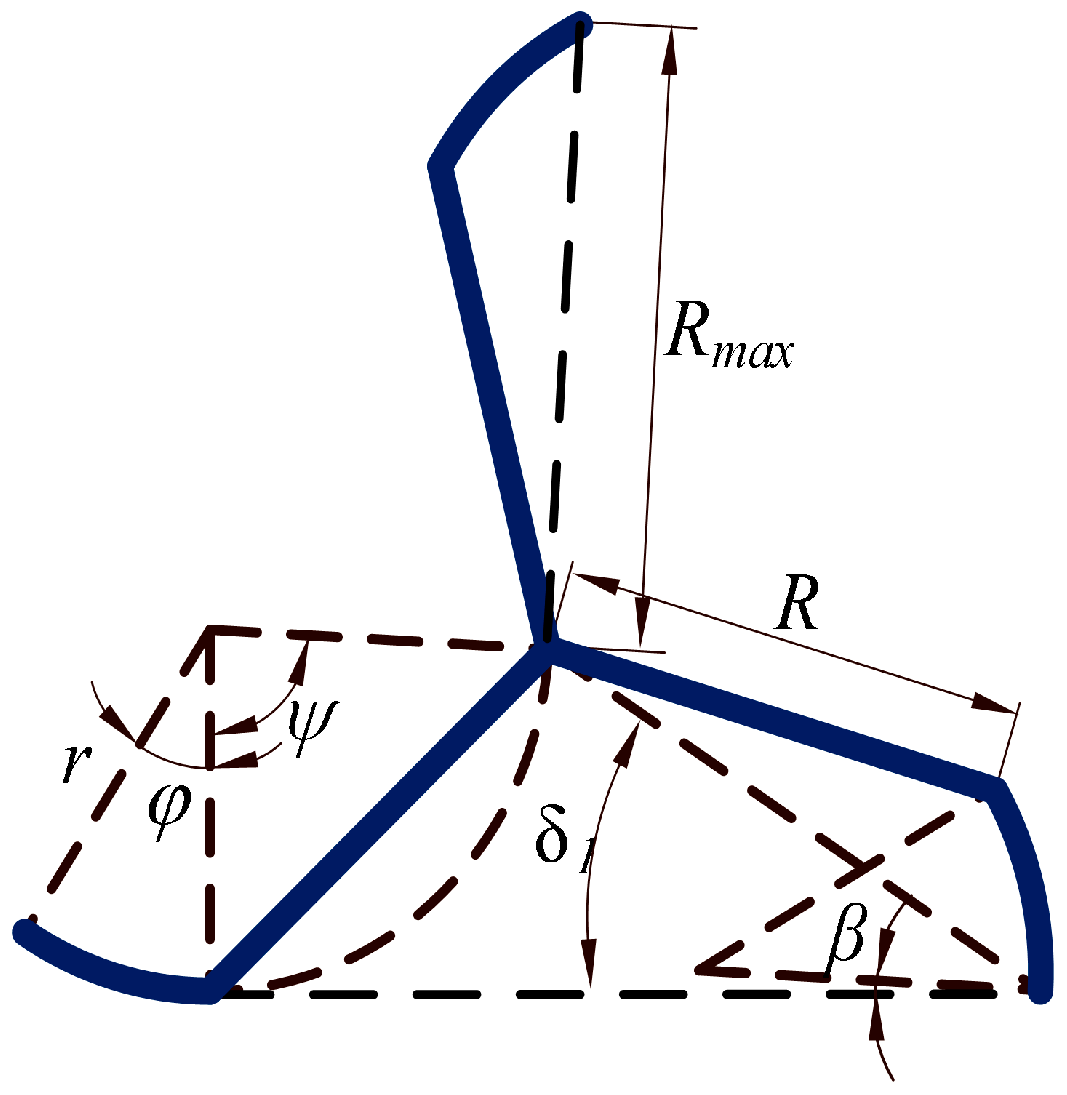

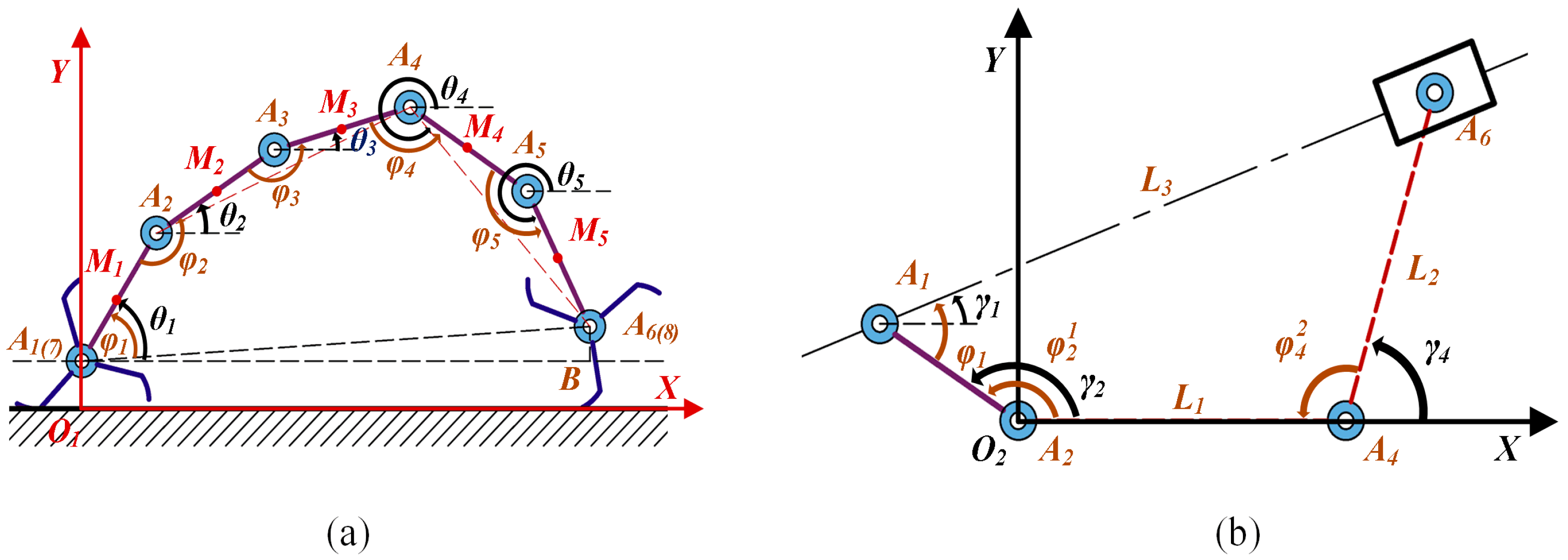


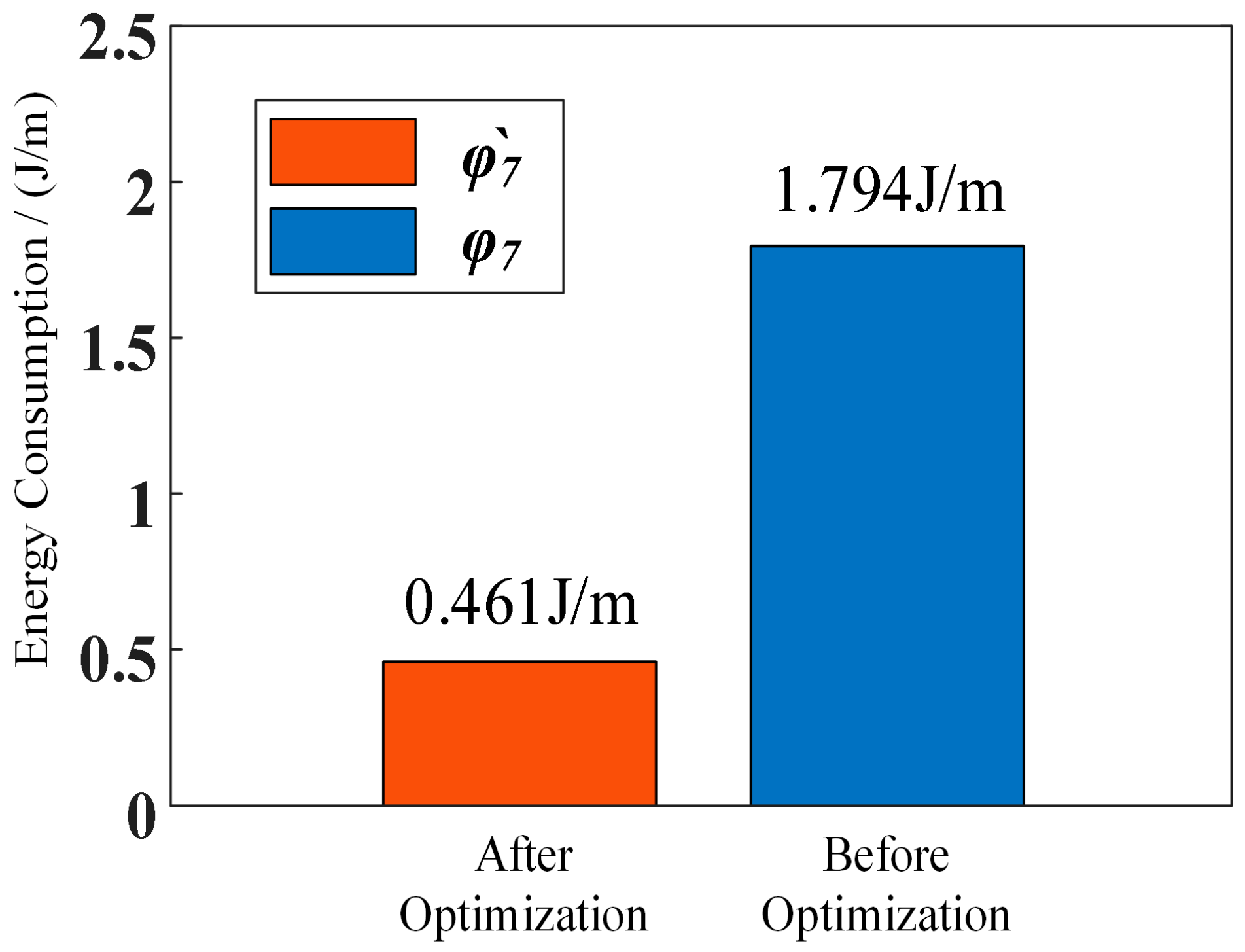


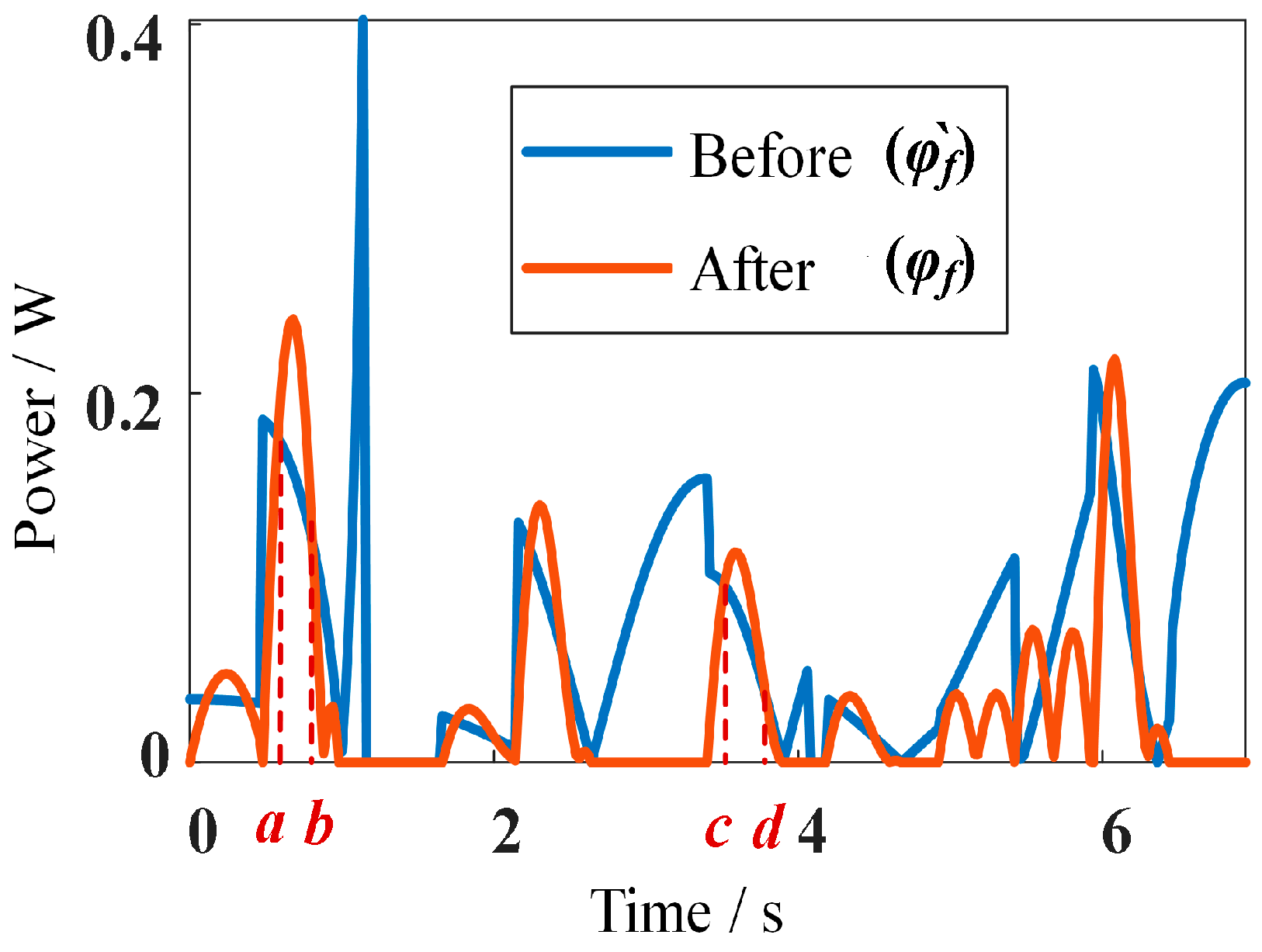


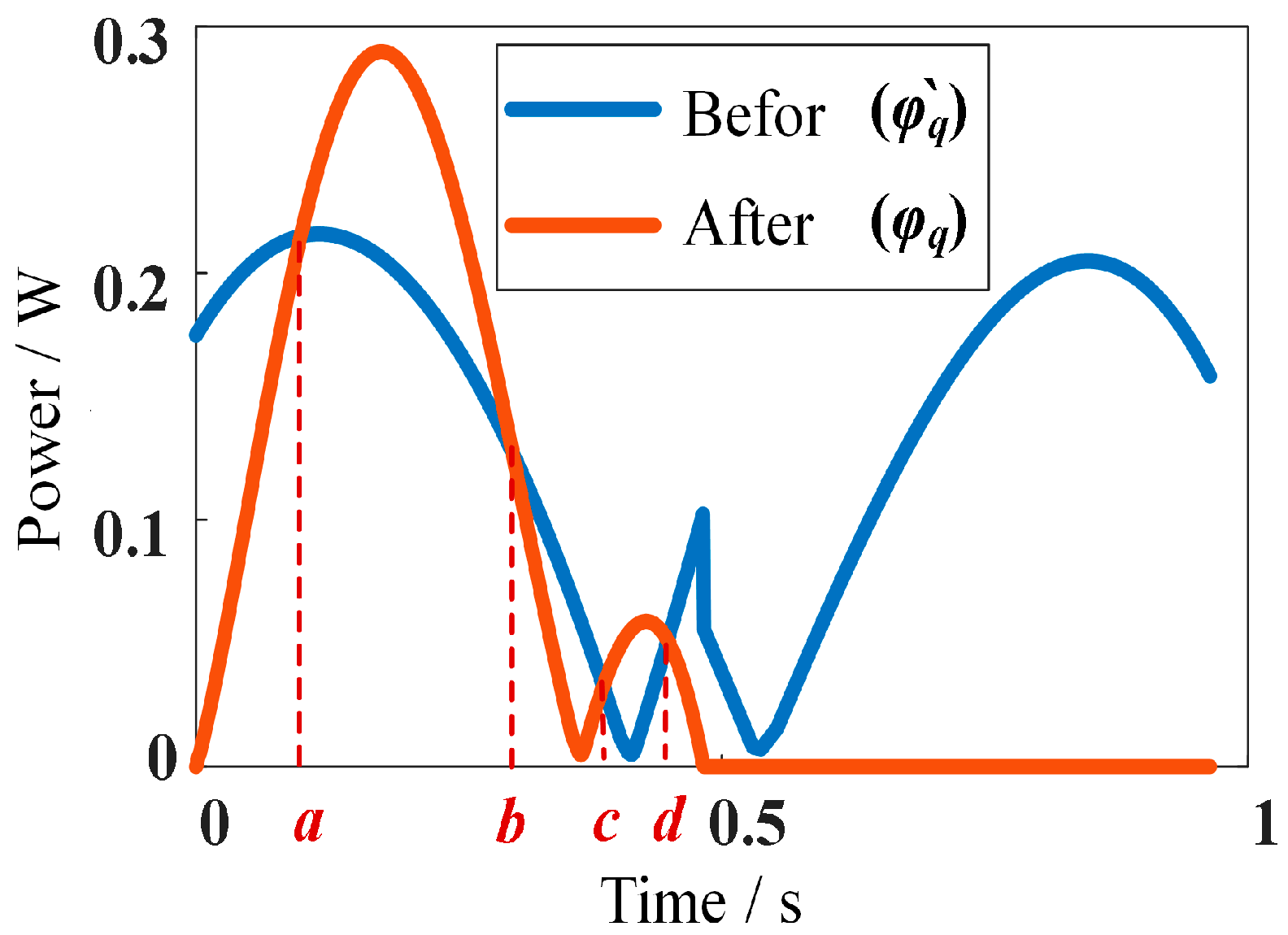
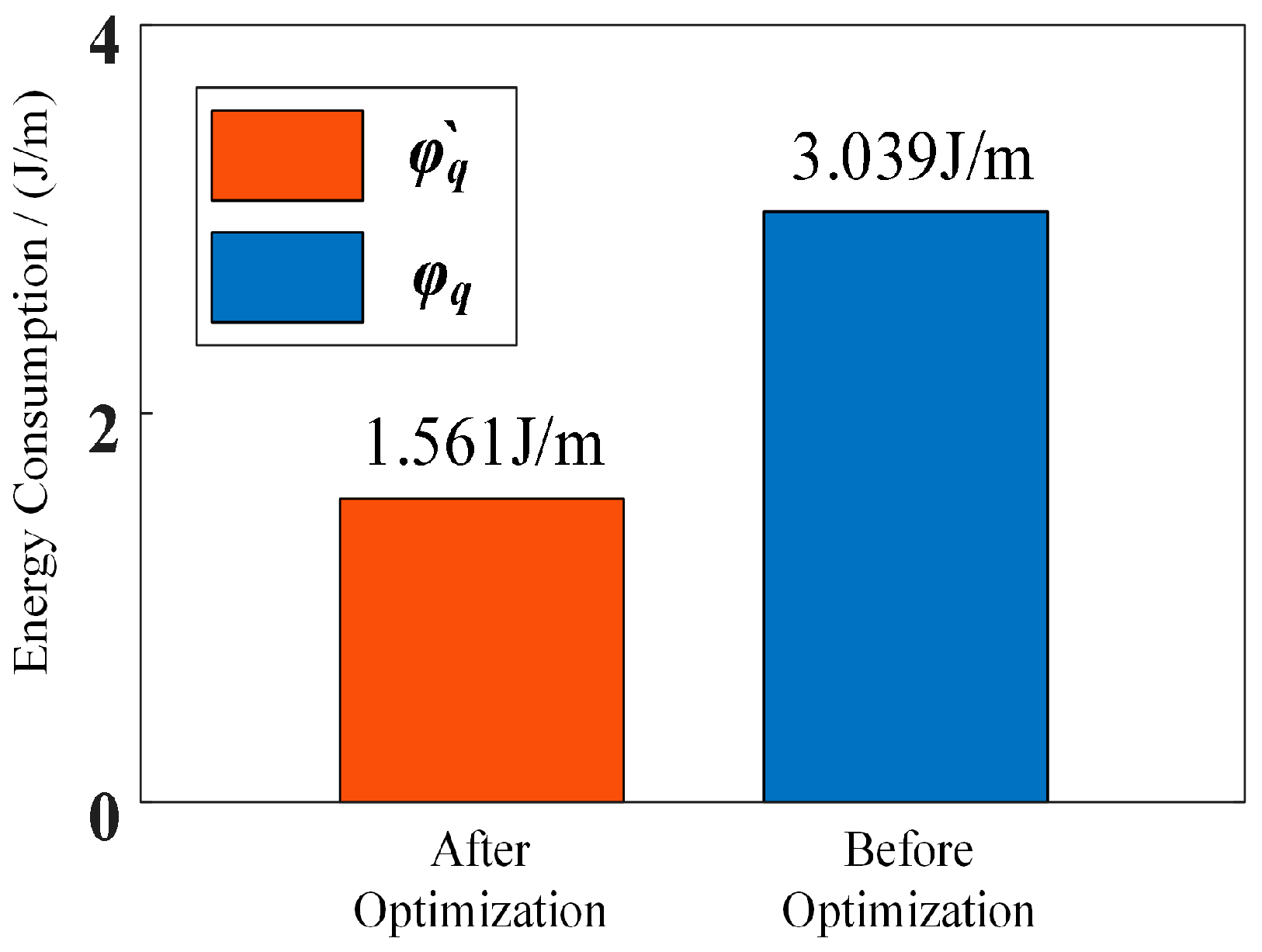
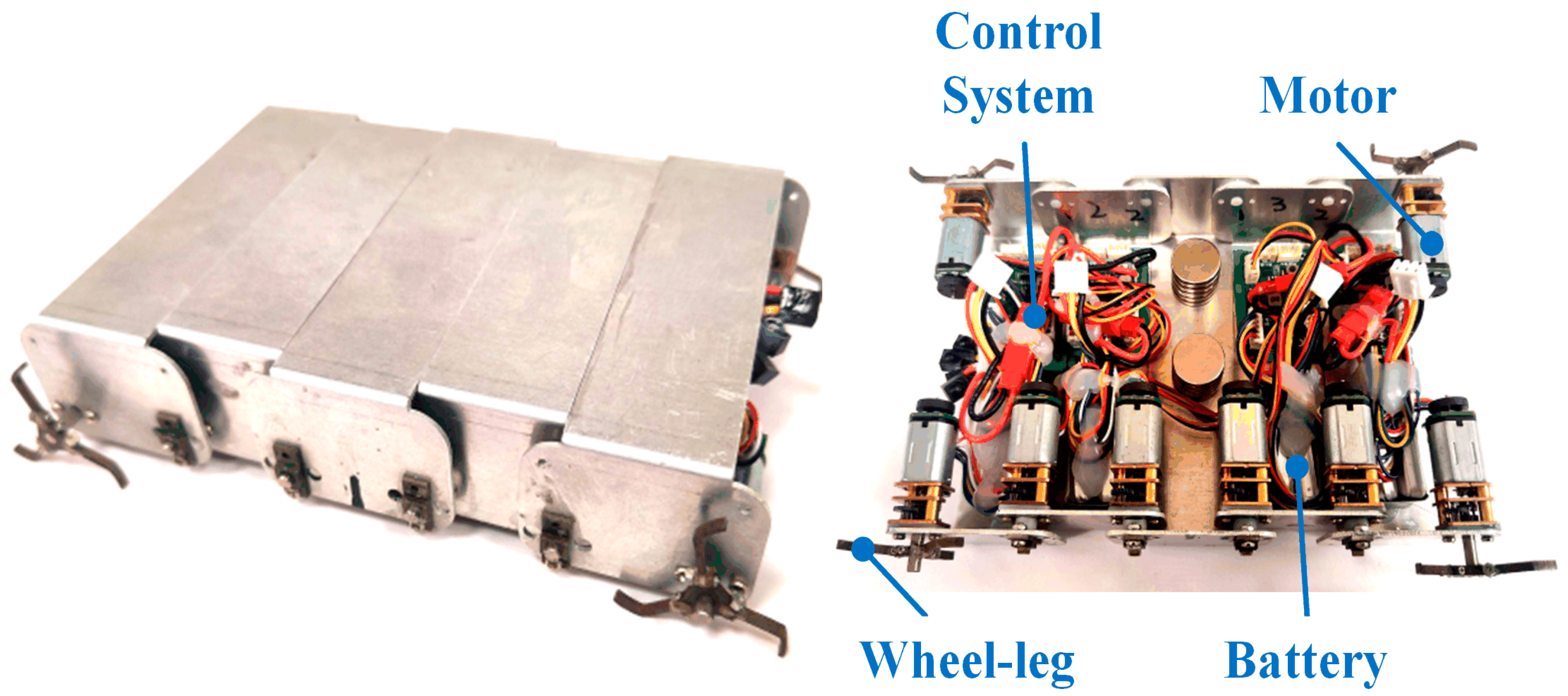
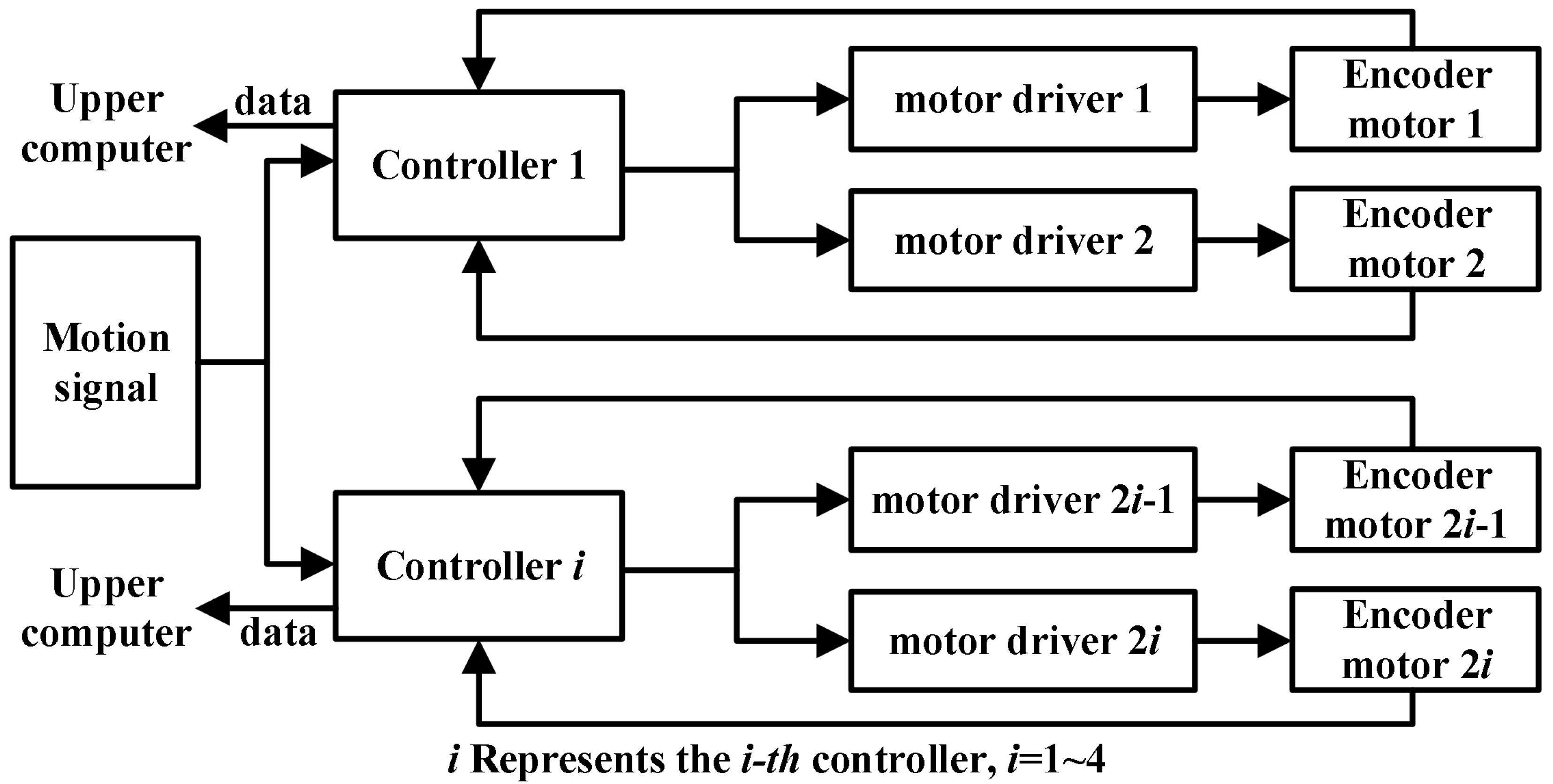
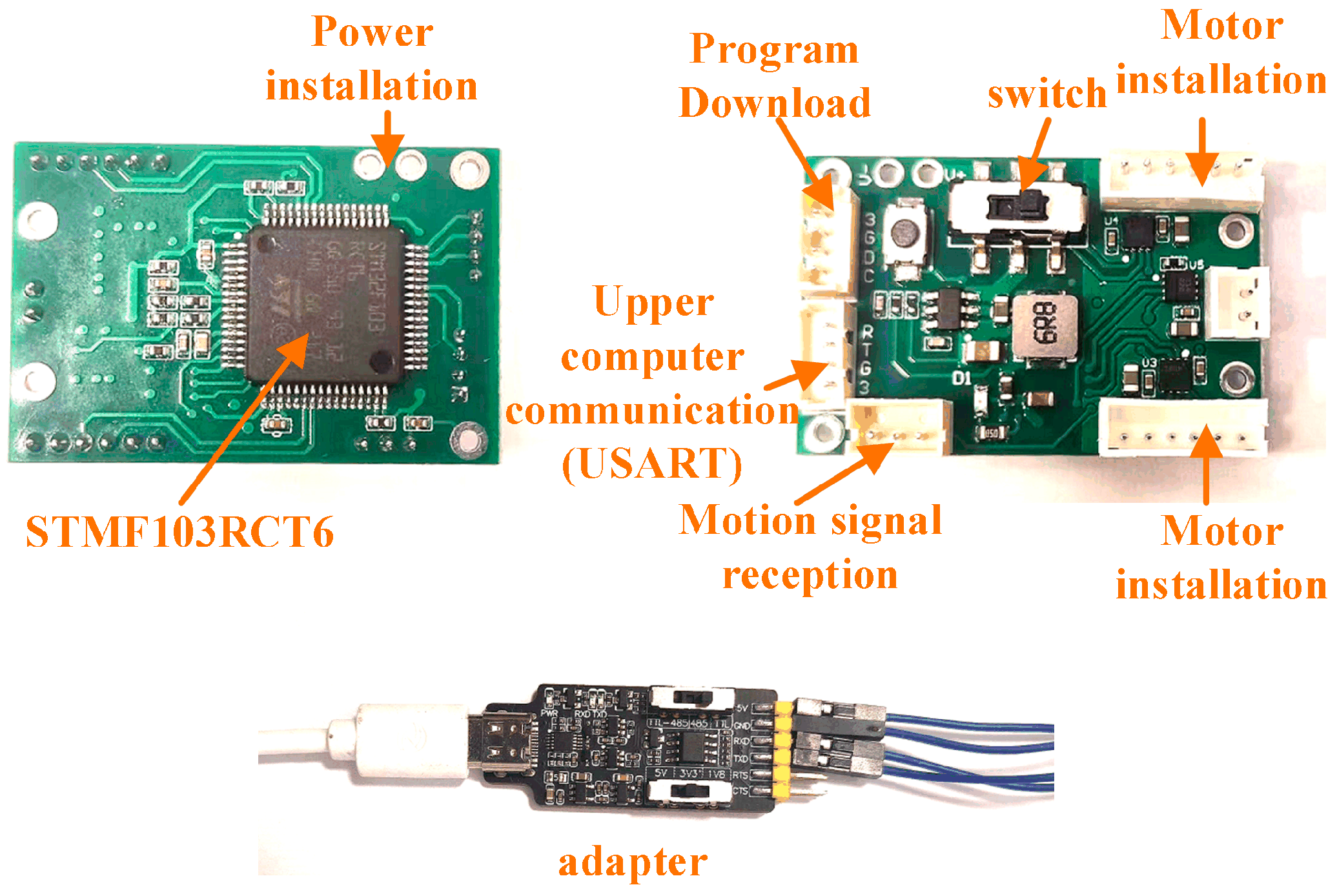
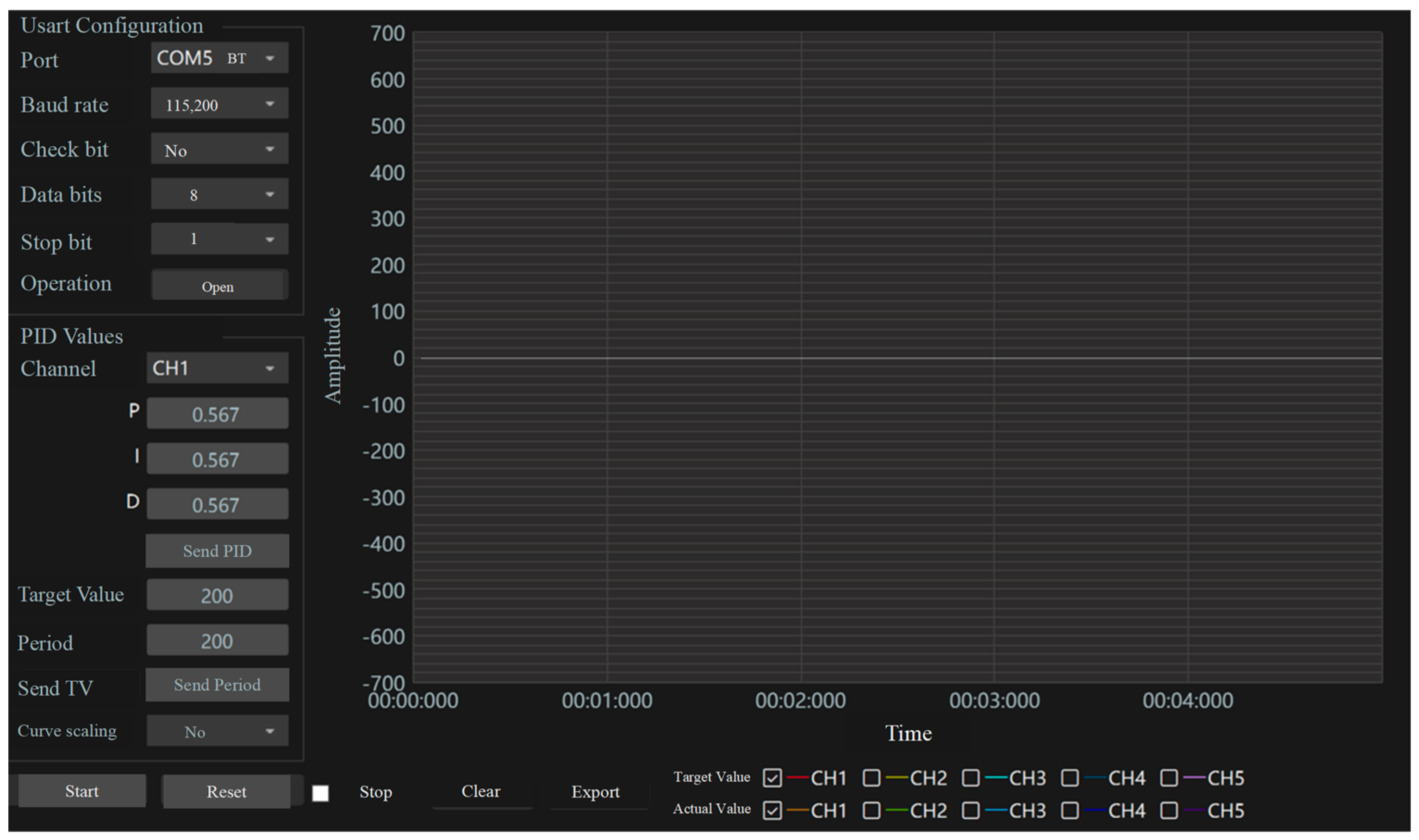
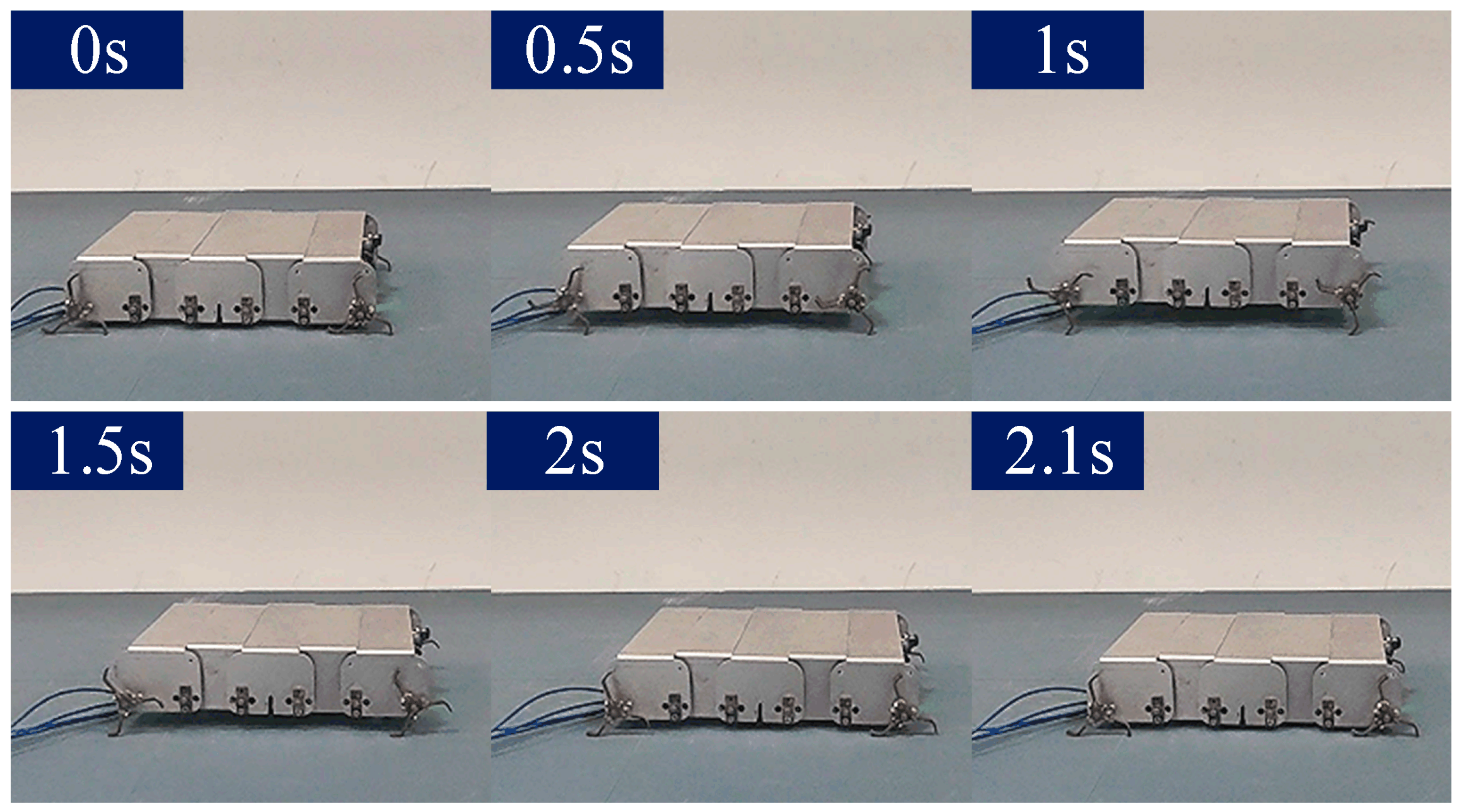

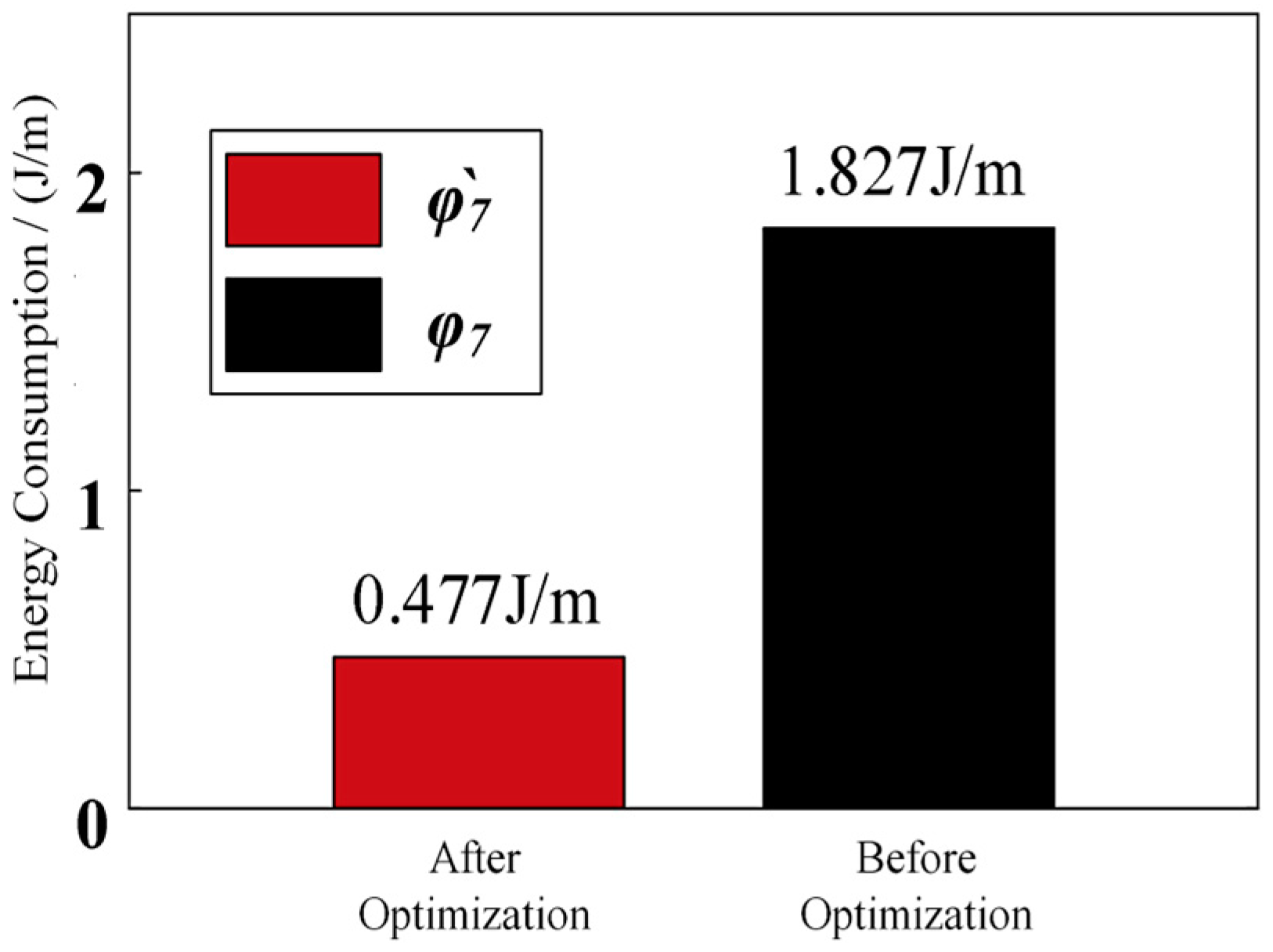

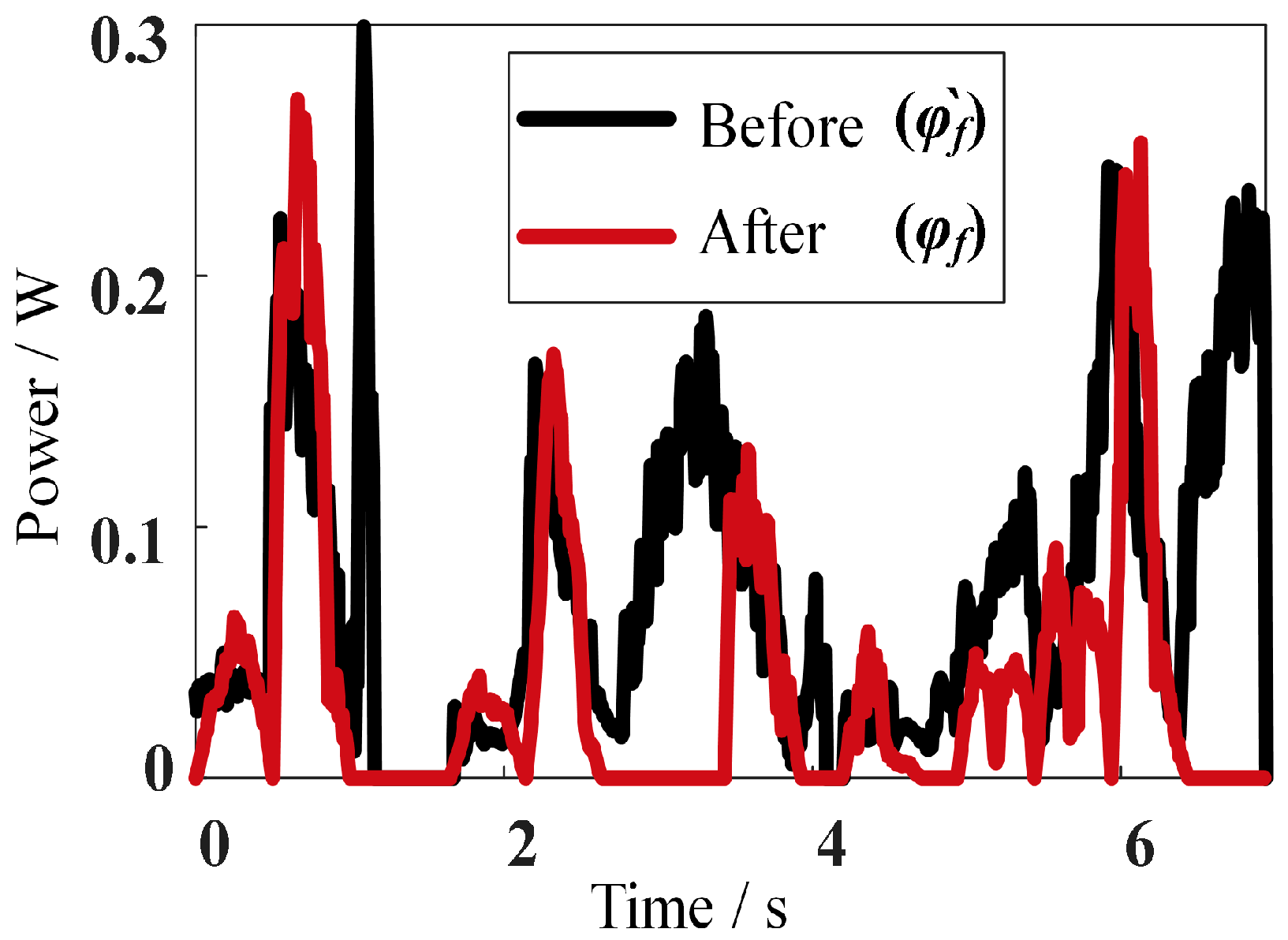
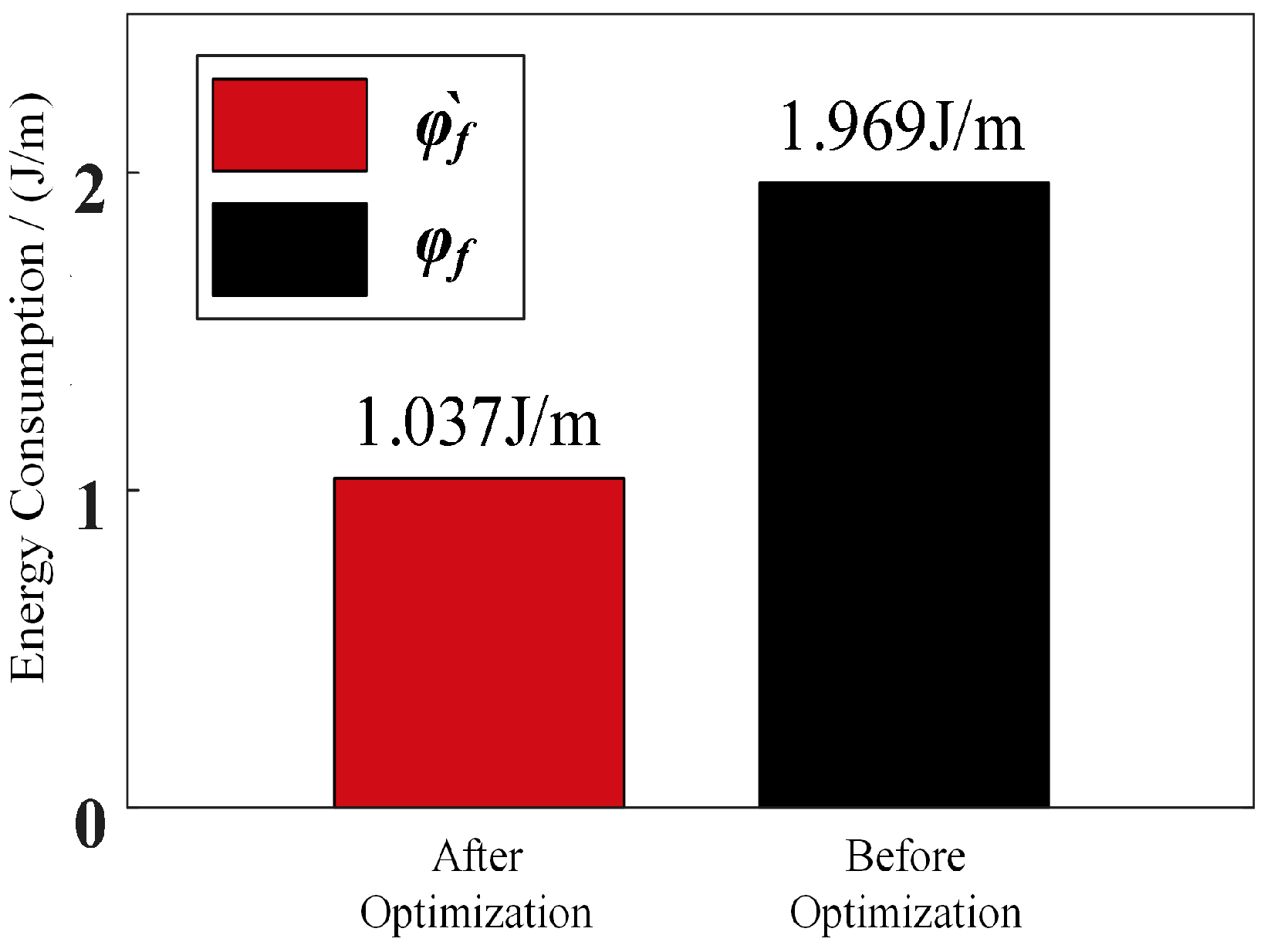

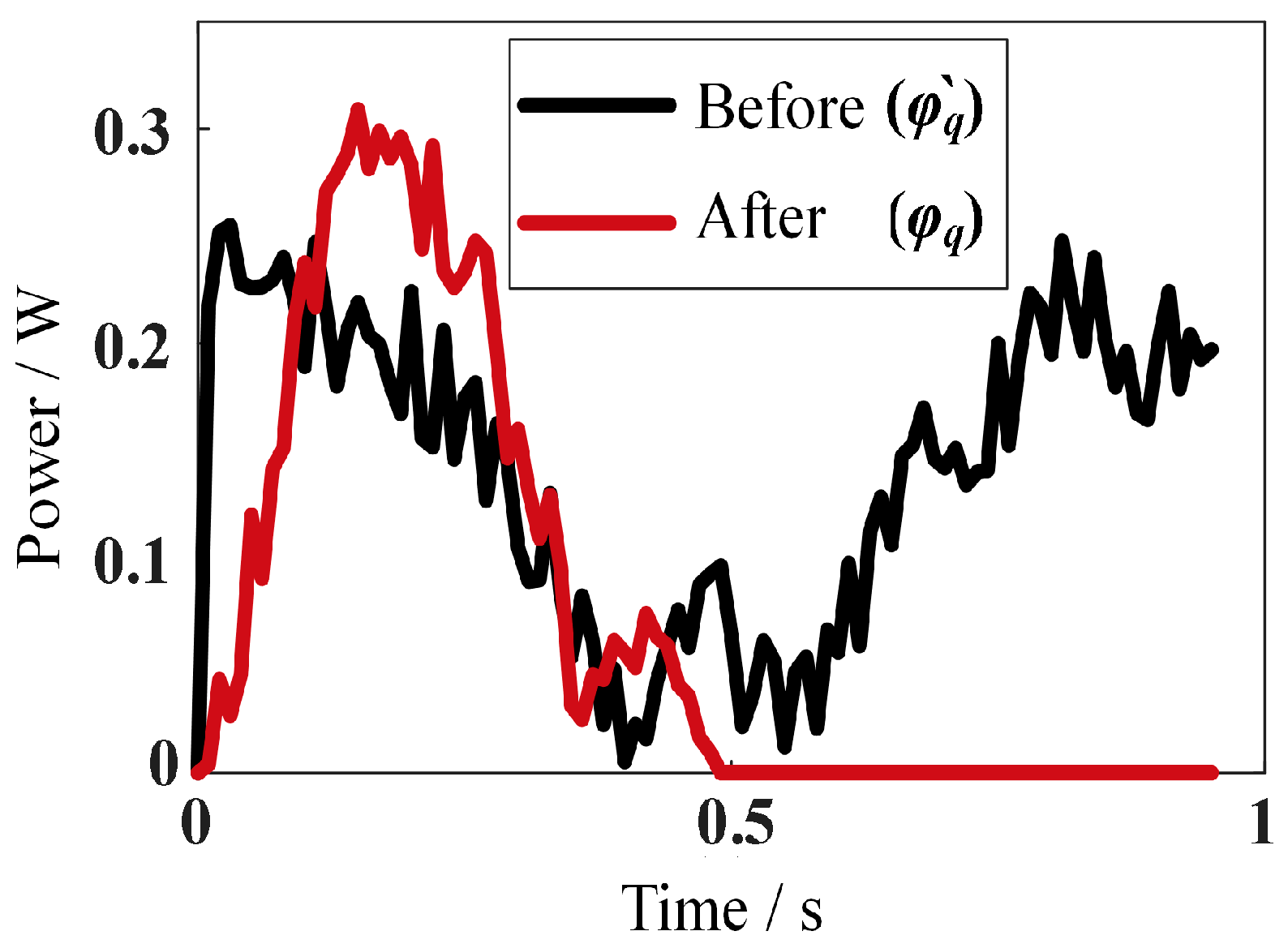

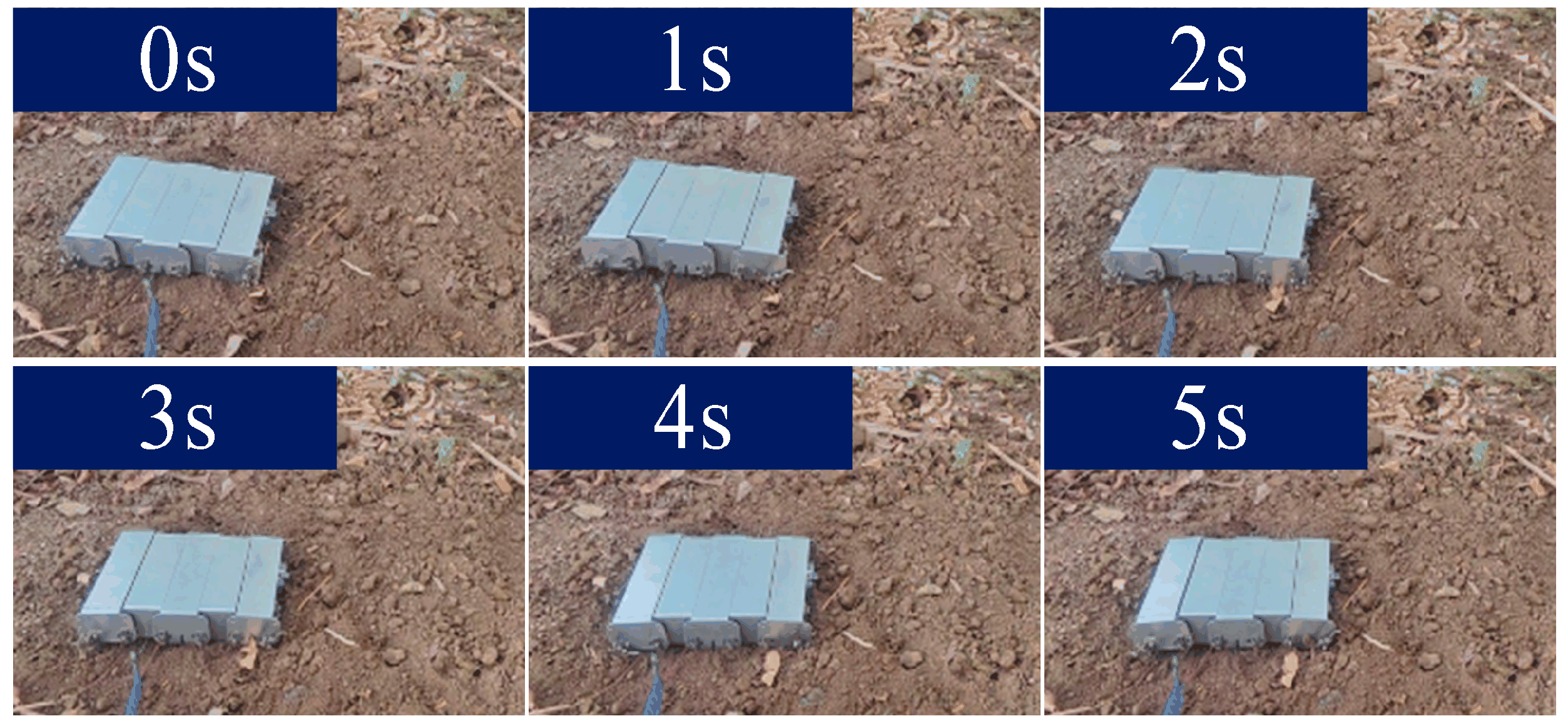
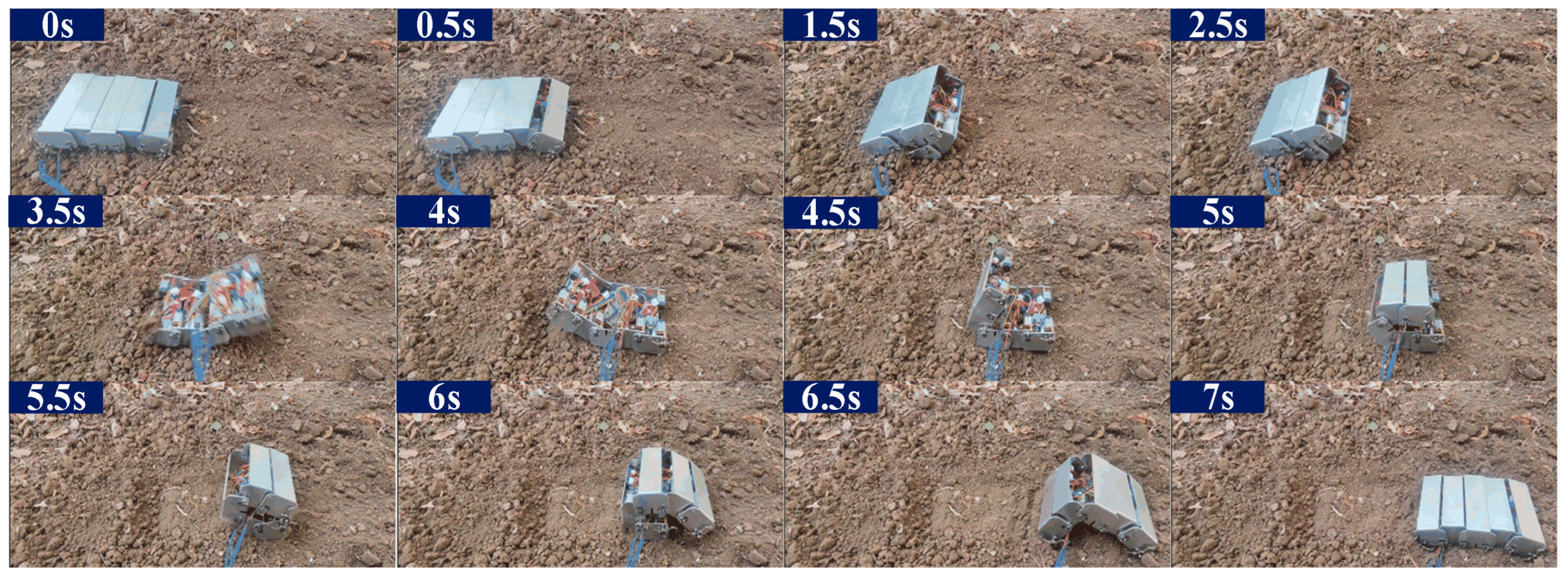
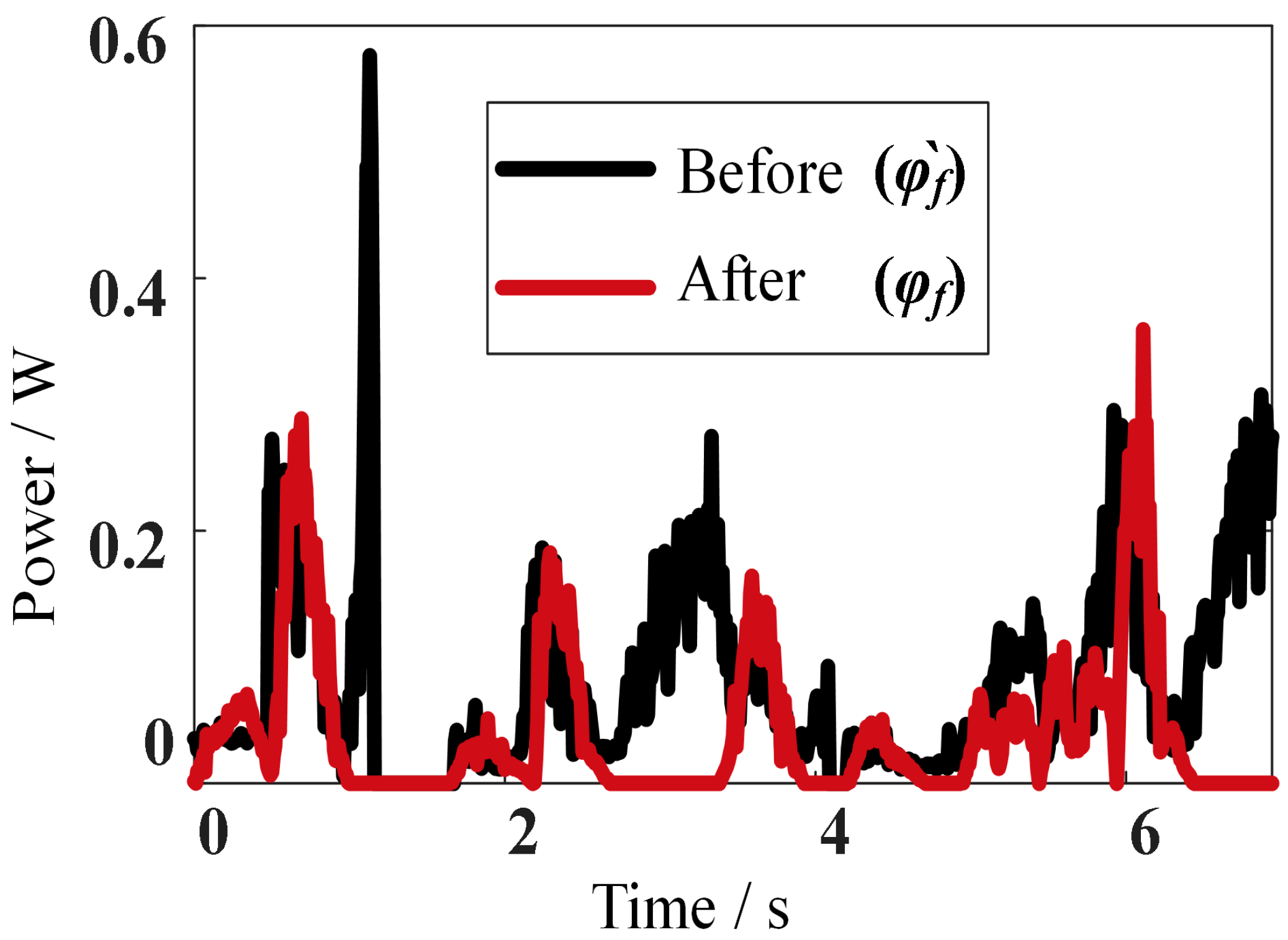
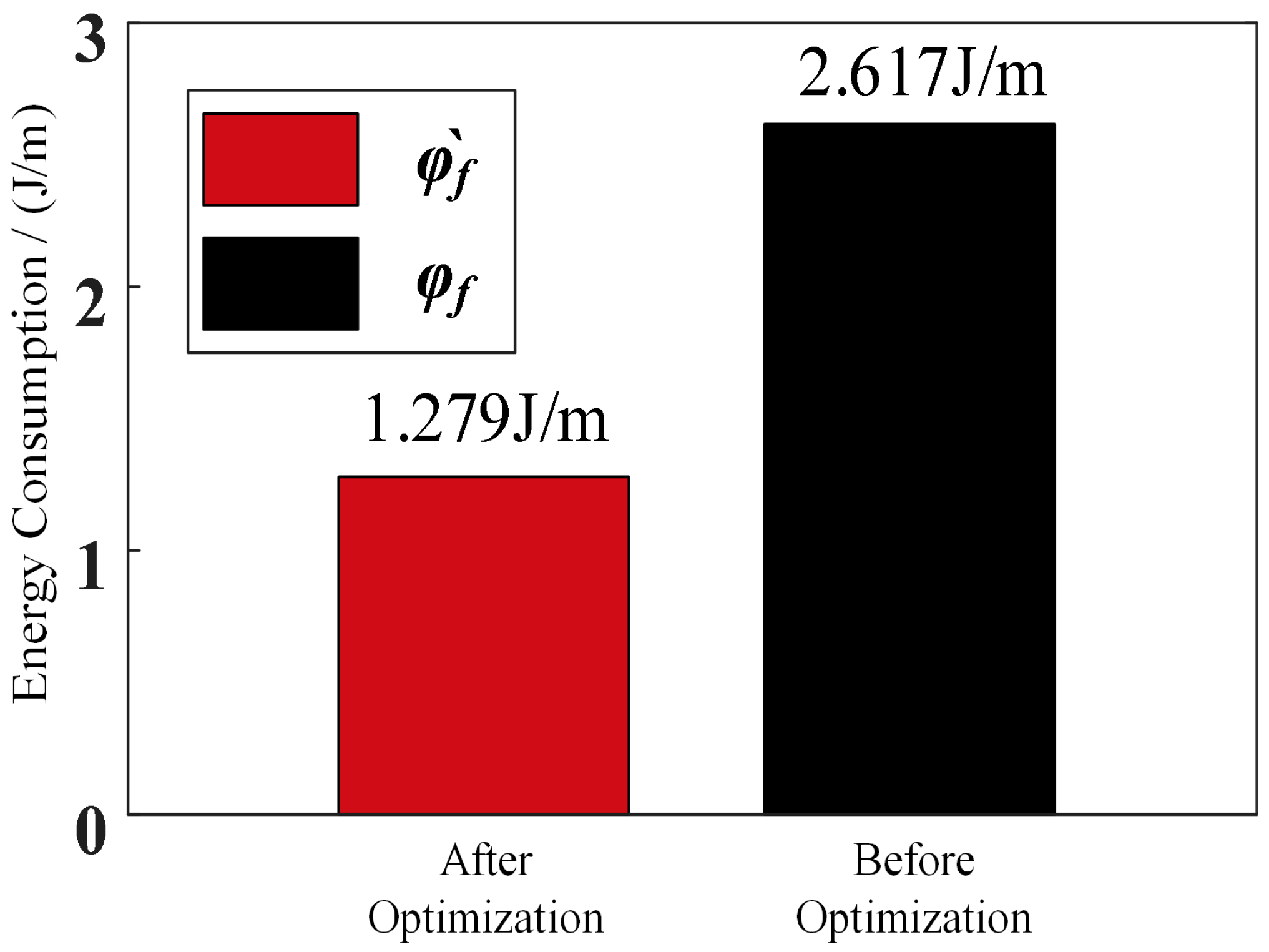
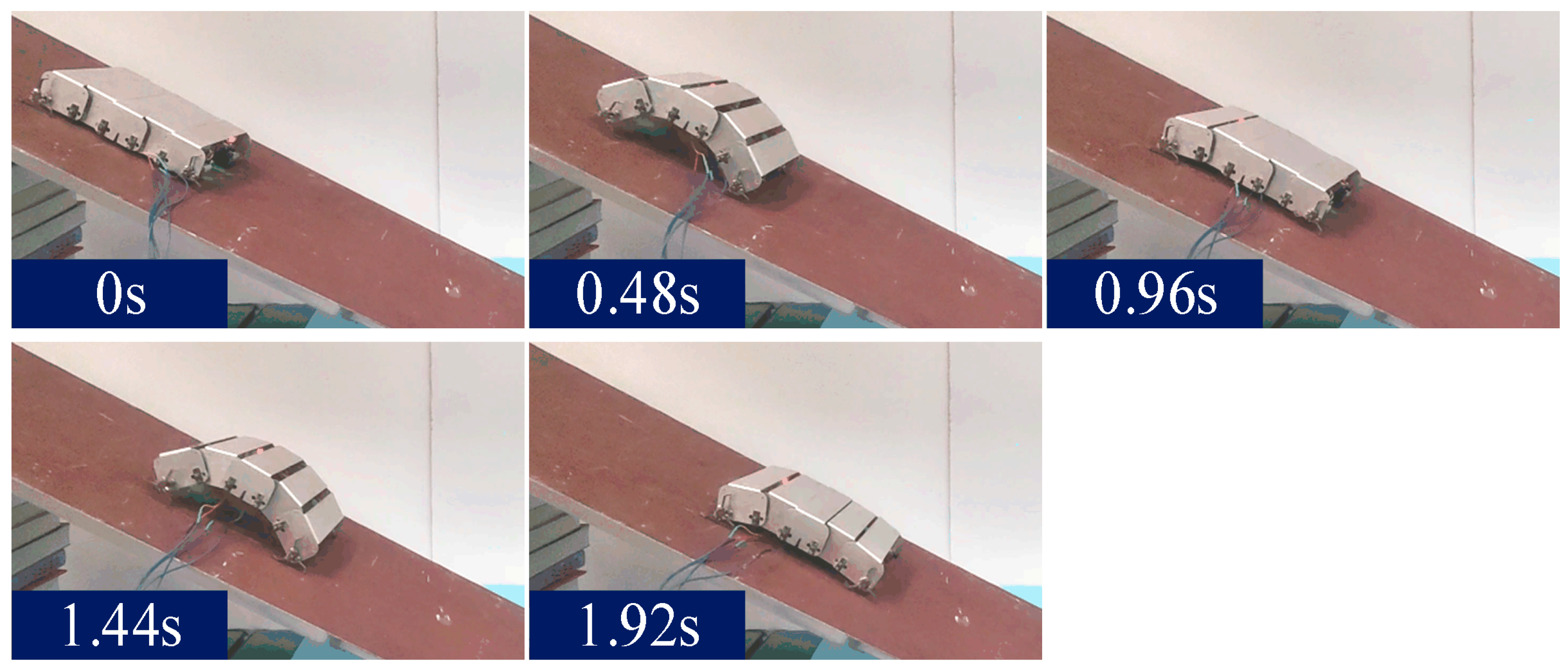


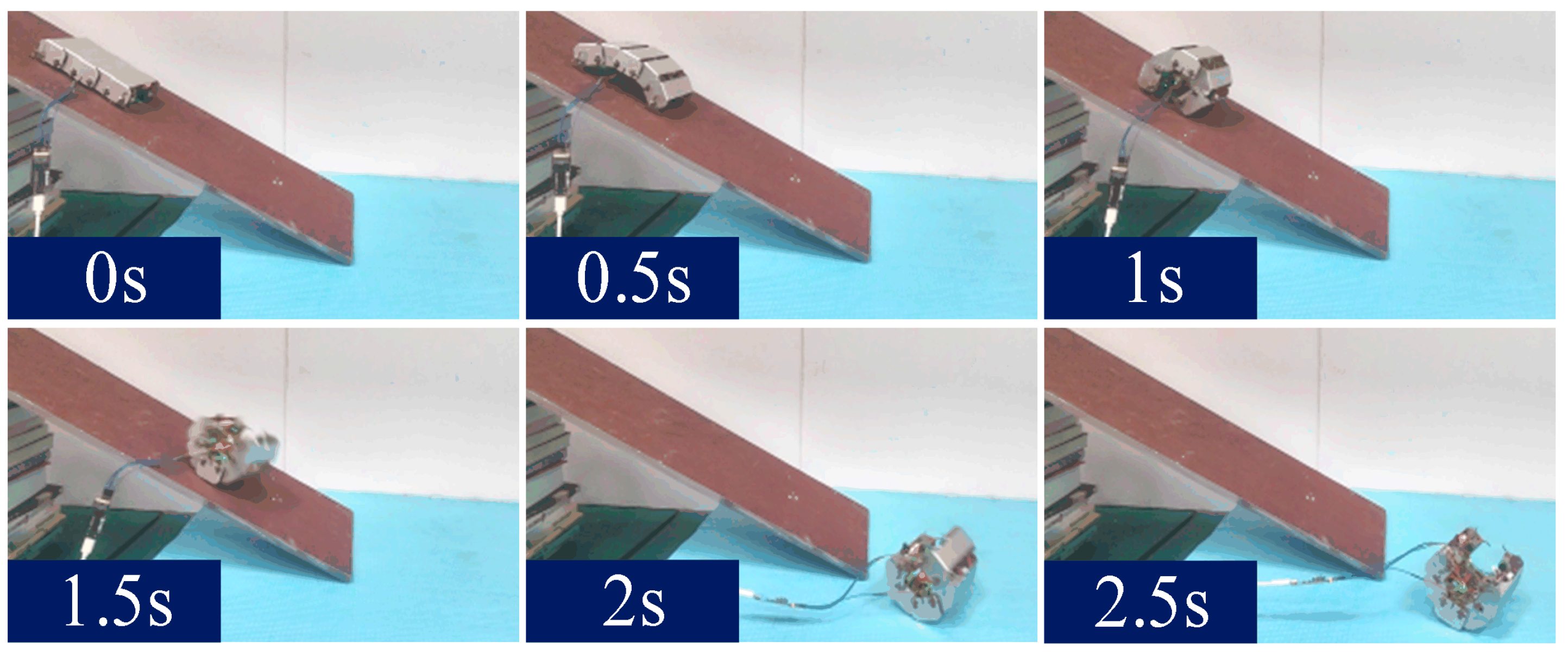


| Symbol | Value |
|---|---|
| 86.9° | |
| 33.1° | |
| 30° | |
| 33.1° | |
| 3.1° | |
Disclaimer/Publisher’s Note: The statements, opinions and data contained in all publications are solely those of the individual author(s) and contributor(s) and not of MDPI and/or the editor(s). MDPI and/or the editor(s) disclaim responsibility for any injury to people or property resulting from any ideas, methods, instructions or products referred to in the content. |
© 2024 by the authors. Licensee MDPI, Basel, Switzerland. This article is an open access article distributed under the terms and conditions of the Creative Commons Attribution (CC BY) license (https://creativecommons.org/licenses/by/4.0/).
Share and Cite
Li, J.; Liu, Y.; Yu, Z.; Guan, Y.; Zhao, Y.; Zhuang, Z.; Sun, T. A Low-Energy Consumption Planning Method for Multi-Locomotion Wheel-Legged Mobile Robots. Machines 2024, 12, 98. https://doi.org/10.3390/machines12020098
Li J, Liu Y, Yu Z, Guan Y, Zhao Y, Zhuang Z, Sun T. A Low-Energy Consumption Planning Method for Multi-Locomotion Wheel-Legged Mobile Robots. Machines. 2024; 12(2):98. https://doi.org/10.3390/machines12020098
Chicago/Turabian StyleLi, Jinfu, Yongxi Liu, Ze Yu, Yuntao Guan, Yingzhuo Zhao, Zheming Zhuang, and Tao Sun. 2024. "A Low-Energy Consumption Planning Method for Multi-Locomotion Wheel-Legged Mobile Robots" Machines 12, no. 2: 98. https://doi.org/10.3390/machines12020098
APA StyleLi, J., Liu, Y., Yu, Z., Guan, Y., Zhao, Y., Zhuang, Z., & Sun, T. (2024). A Low-Energy Consumption Planning Method for Multi-Locomotion Wheel-Legged Mobile Robots. Machines, 12(2), 98. https://doi.org/10.3390/machines12020098






